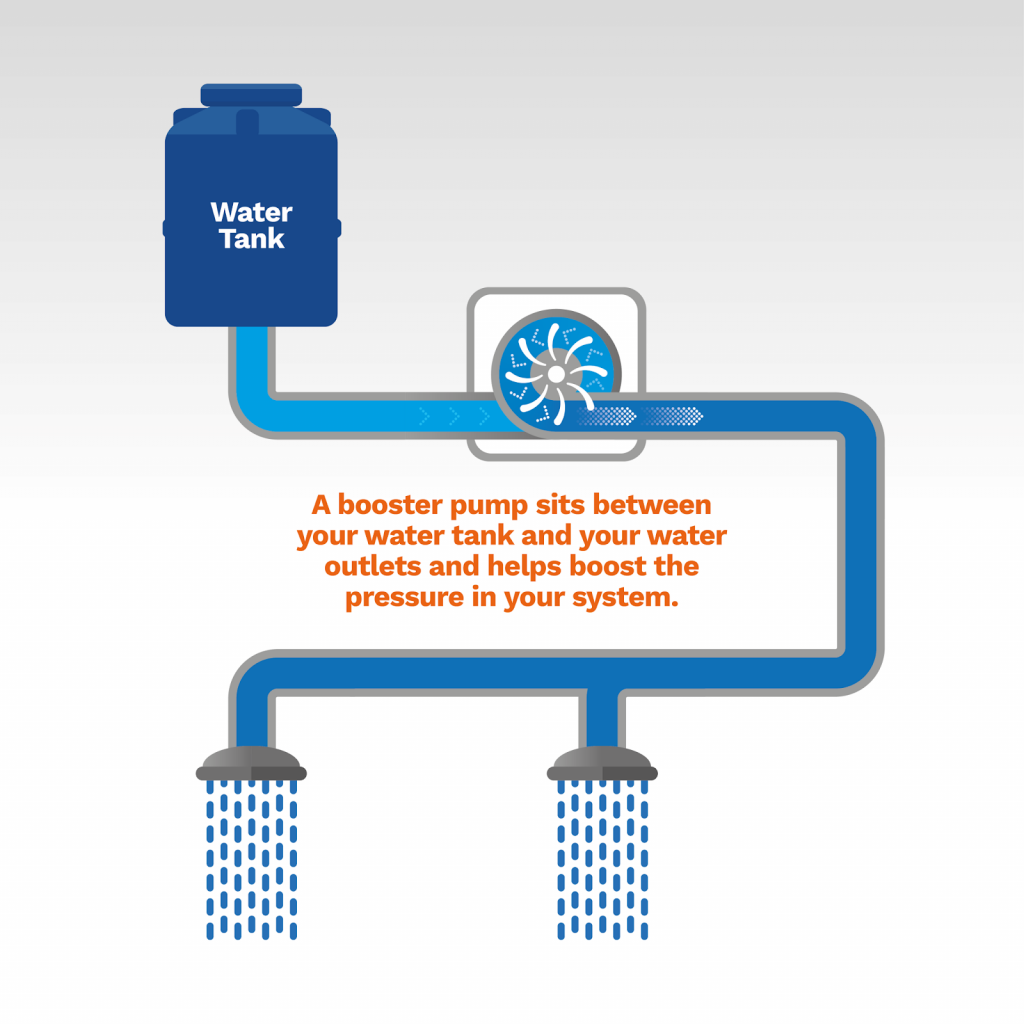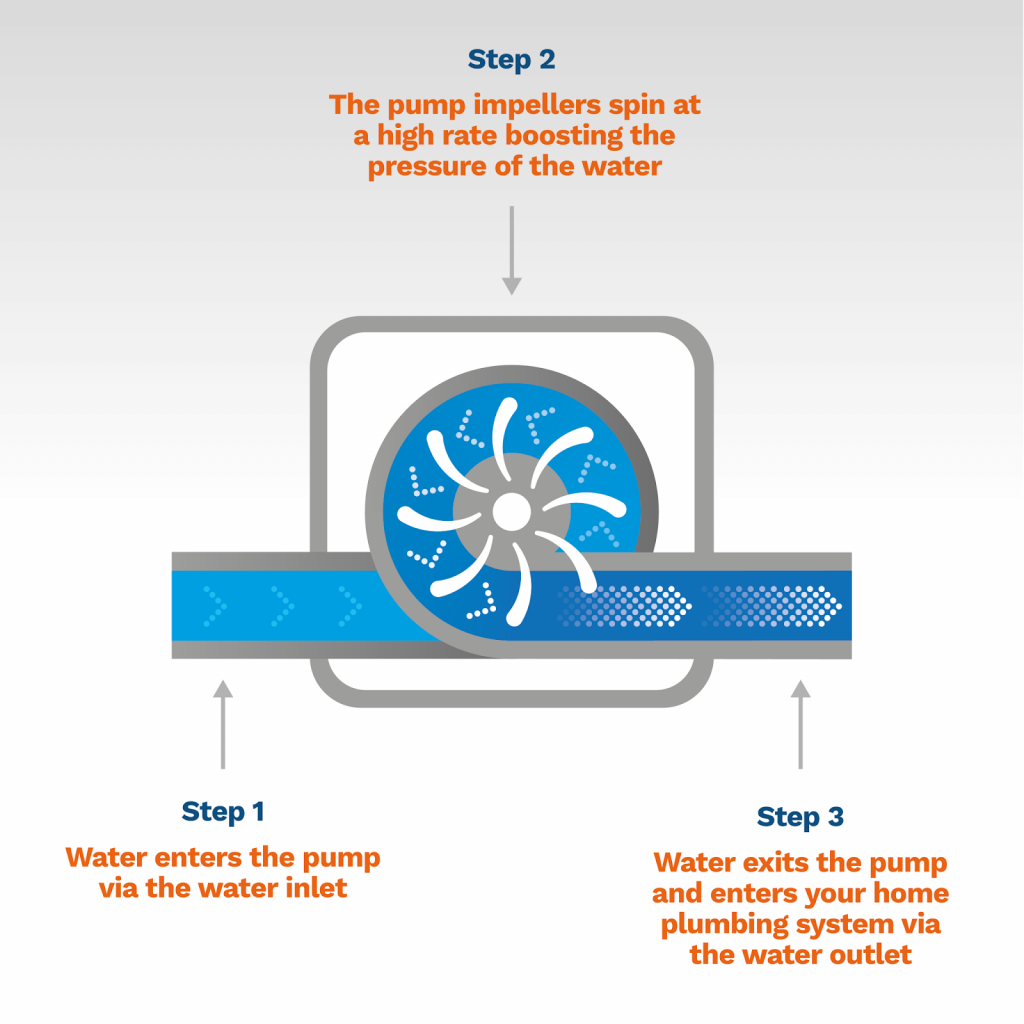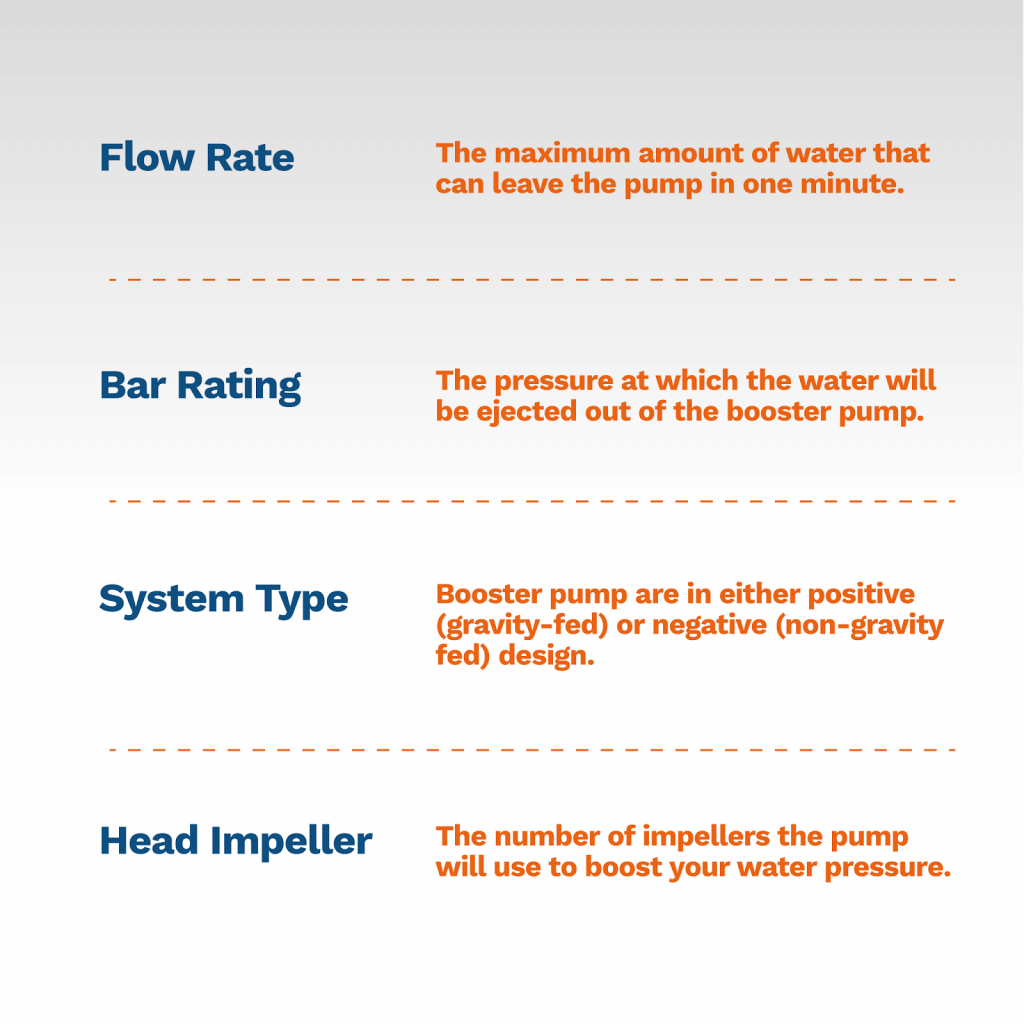Buying a Home Booster Pump: The Complete Guide
This is the complete guide to buying a booster pump. It covers:
- What is a booster pump?
- How does a booster pump work?
- What are the important features of a booster pump?
- Do I need a booster pump?
- What type of booster pump do I need?
- How do I install a booster pump?
So, if you’re looking to boost low water pressure in the home, this is the guide for you.
Let’s get started.
Free advice: If you can’t find the answer to your question below, please contact us on 0800 112 3134 and speak to our trained pump professionals now.
What is a booster pump?
A booster pump is a small mechanical device that can be connected to your home’s plumbing system. The pump is capable of detecting when water pressure is low and then automatically boosting the performance of incoming mains water supply to your preferred pressure.
Simply put, if you frequently experience low water pressure when using taps, shower heads or other appliances in your home, a booster pump can increase the pressure of the water.
How does a booster pump work?
Booster pumps, mechanically speaking, are fairly simple tools. The pump has an inlet (where the water enters the pump) and an outlet (where the water exits the pump). When installed between your water tanks and water outlets, a booster pump will use a set of impellers to boost the pressure of the water moving through your system. Here’s a step by step guide to how it works:
Step 1: Water Enters the Pump
The booster pump draws fluid into the pump through the mains supply or break tank (an inlet).
Step 2: Pump Impellers are Activated
When water enters the chamber of the pump, the pump activates the impellers.
Step 3: Water Exits the Pump
The impellers then spin at a high rate boosting the pressure of the water before exiting through the outlet.
Booster pumps come in various designs depending on the brand and can work with single or multiple impellers, depending on your system’s requirements.
What are the important features of a booster pump?
There are four important features of a booster pump that you should be aware of when making a purchase decision. These are:
- Flow Rate
- Pressure/Bar Rating
- System Type
- Head Impeller
What is flow rate?
This is the maximum amount of water that can leave the pump every minute.
For example, the Salamander Home Booster can increase the flow rate to 12 litres of water per minute even if the incoming flow rate is only 3 litres of water per minute.
If you have a large family in a home of considerable size, then you may need a pump with a higher flow rate.
Note: Be aware that if you are drawing from the mains, you are only allowed legally to draw 12 Lpm. If you require more, then you will need to install a break tank.
What is bar rating?
This is the pressure at which the water will be ejected out of the booster pump. For example, the Salamander Home Booster pump has a 1.5 bar rating. If your water pressure is 0.7 bar, the Salamander will double your water pressure. Again, if you have a large family in a home of considerable size, then you probably need a more powerful pump.
What is a system type?
Booster pumps come in either positive or negative types. This determines how the pump will be activated. A positive pump is activated by gravity. A negative pump is activated by a drop in the pressure between the pump and the device. For a full explanation on positive and negative pumps, read our guide here.
What is a head impeller?
Booster pumps are operated using an impeller system. Think ‘airplane engines’ and you are on the right track. In most modern booster pumps you can have single or multiple impellers. The more impellers, the more powerful the pump.
Do I need a booster pump?
If you think you have low water pressure issues, and you’re considering the purchase of a booster pump, there is a simple three step test that you can conduct to test your flow. All you need for this test is: a measuring jug, a timer and a calculator.
Step 1: Place a 1 litre measuring jug under the tap or shower
Step 2: Turn the problem tap or shower on full
Step 3: Time how long it takes to fill the jug
If it takes more than 6 seconds to fill the jug, then you have low water pressure.
Note: We also recommend getting a qualified plumber to assess the requirements needed for your home.
What type of booster pump do I need?
If you’re considering purchasing a booster pump there really are only a handful of pump brands worthy of your time. These are: Grundfos, Salamander and Stuart Turner. Here is the top pump from each brand:
Salamander Home Boost 1.6 Bar Mains Water Pressure Booster Pump 240V
One of the leading options for correcting low water pressure is the Home Boost range from Salamander pumps. These are able to raise your water pressure to around 1.5 bar whilst still ensuring you stay compliant with water-use and installation regulations. They are compact and easy to install and quiet in operation too, so they won’t disrupt your home with extra noise.
Features:
- Bar Rating 1.6 Bar
- Max Flow 12 l/min
- System Type Positive
- Head Impeller Single Impeller
Search prices on the Salamander Home Boost 1.6 Bar Mains Water Pressure Booster Pump 240V here.
Grundfos 4.5 Bar Home Booster
Another leading option is the new Home Booster range from Grundfos. The home booster is a fully integrated, self-priming system that is ideal for boosting water pressure in domestic applications. Integrated speed control also means that the pump will only operate when it’s needed, so it won’t hit your energy bills either.
This pump also has an integrated break tank installed ensuring you are in accordance with water byelaws regulations. However, please keep in mind that if you have a large property, you may need an additional tank.
Features:
- Bar Rating 4.5 Bar
- Max Flow 70 l/min
- System Type Positive
- Head Impeller Single Impeller
Search prices on the Grundfos 4.5 Bar Home Booster.
Stuart Turner 3.0 Bar Flomate Mains Boost Extra
Stuart Turner’s Flomate range is one of the finest pump collections on the market. The 3.0 bar of pressure will give a deserved boost to your water supply, while the tech also comes with an integrated break tank - which removes the need for inserting a separate cold water break tank.
Features:
- Bar Rating 3.0 Bar
- Max Flow 40 l/min
- System Type Positive
- Head Impeller Twin Impeller
Search prices on the Stuart Turner Flomate Mains Boost Extra 200 here.
How do I Install a Booster Pump?
While you can fit a booster pump yourself, we suspect that the majority of people reading this article may want to contact a plumber. However, if you are handy with your DIY, booster pump installation is much simpler and quicker than most would think. Here are some key questions answered on how to install a booster pump.
Do I need any special tools to install a booster pump?
All of the fittings you need for installation are included in the pump kit. Included are: washers, a filter washer, a straight connector, an isolation valve connector and some adapters to cope with either 15mm or 22mm pipe connections. Full instructions are also included, so you’re ready to start installing as soon as you get the kit.
How long does it take to install a booster pump?
Installation should take approximately one hour and you only need a few tools to get started.
How much does it cost to install a booster pump?
Depending on your area, it should only cost about £50 to £100 to install a booster pump.
Are there any installation videos I can follow for guidance?
If you are feeling confident and you’re ready to install, then watch this excellent video from Salamander Pumps for guidance.
Note: Again, if you require a flow rate higher than 12 litres per minute, then a break tank will need to be installed. It is illegal to draw more than 12 litres per minute from the public mains.
If you're struggling for booster pump advice, please contact us on 0800 112 3134 and speak to our trained pump professionals now.Free Advice




